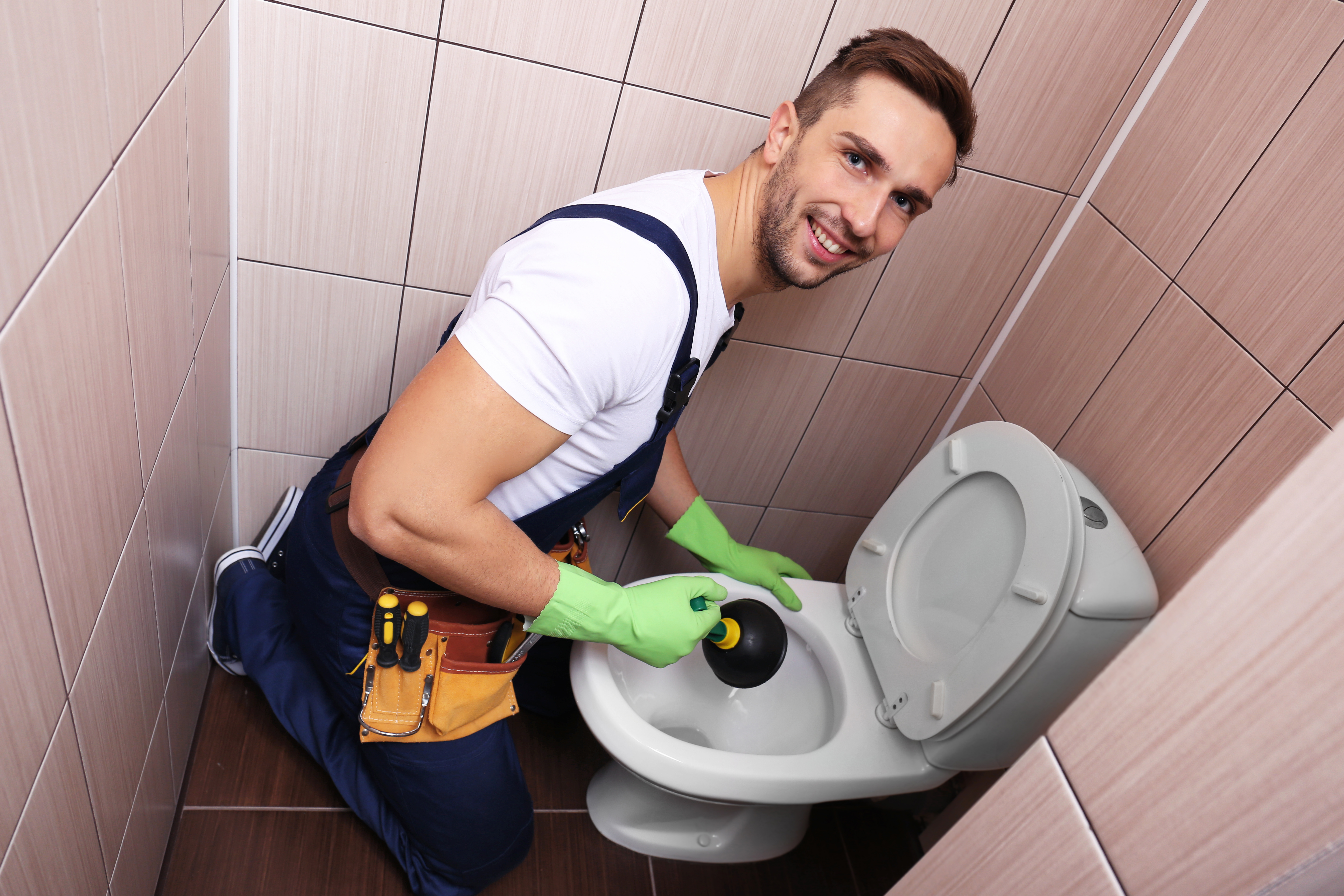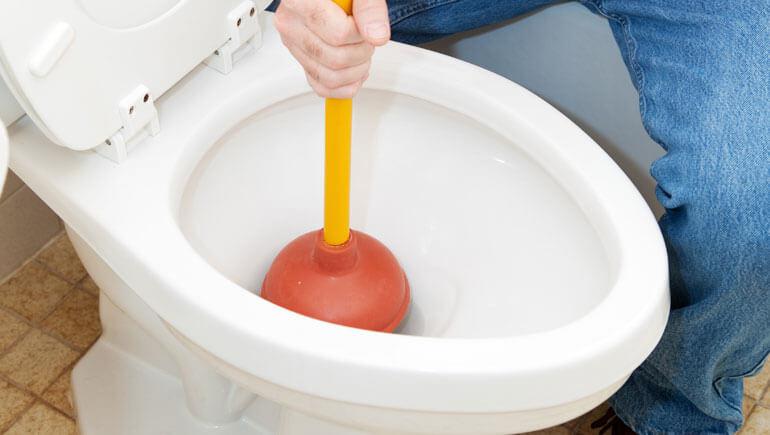Just how do you really feel when it comes to Tips on How to Effectively Use a Plunger?

Introduction
Correct maintenance of household drains pipes is necessary for preventing blockages and ensuring smooth water flow. Among the trick tools in every property owner's toolkit is the bettor, along with various drain cleaners developed to deal with persistent obstructions properly. This article explores how to utilize plungers and drain cleaners effectively to keep your drains moving openly.
Area 1: Comprehending Plungers
Types of Plungers
There are several types of bettors offered, each developed for different sorts of drains pipes and clogs. The most typical kinds consist of cup plungers, flange plungers, and accordion plungers.
Exactly How Plungers Job
Bettors work with the principle of creating pressure and suction to dislodge blockages. When appropriately used over a drainpipe, they produce a vacuum cleaner that can take out debris or break up obstructions.
Selecting the Right Plunger
Selecting the right plunger depends on the sort of drainpipe and the nature of the clog. Cup bettors are suitable for sinks and bathtubs, while flange plungers are better suited for commodes due to their layout.
Usual Mistakes with Plungers
Preventing these blunders ensures efficient plunging: incorrect seal around the drainpipe, not enough pressure, and unclear bordering particles.
Section 2: Utilizing Plungers Efficiently
Preparation
Before diving, make certain the bettor covers the drainpipe totally and forms a tight seal. Clear any kind of noticeable debris around the drainpipe opening.
Strategy
Begin with gentle diving movements to build suction. Rise stress progressively, making use of a steady rhythm. Repeat as necessary until the drain clears.
Repairing Tips
If plunging doesn't work, try readjusting the seal, using petroleum jelly for a better seal, or utilizing a different kind of bettor.
Area 3: Recognizing Drainpipe Cleaning Company
Sorts Of Drainpipe Cleaners
Drain pipes cleansers can be chemical or chemical. Chemical cleansers make use of solid chemicals to liquify blockages, while enzymatic cleaners use natural enzymes to break down raw material.
Just How Drainpipe Cleansers Work
Chemical cleaners respond with blockages to dissolve them, while enzymatic cleansers break down natural materials like hair and grease without damaging pipes.
Safety and security Factors to consider
Constantly use handwear covers and eye protection when making use of chemical drainpipe cleaners. Make sure ample ventilation and comply with maker guidelines carefully.
Eco-Friendly Alternatives
Think about utilizing vinegar and cooking soft drink or enzyme-based cleansers for eco-friendly options that are safer for pipelines and the setting.
Area 4: Making Use Of Drainpipe Cleaning Company Properly
Application Methods
Pour chemical cleaners directly right into the drainpipe opening. Enable them to help the recommended time prior to purging with hot water. Enzymatic cleansers ought to sit over night.
Preventative measures
Stay clear of mixing different types of cleaners, as this can create hazardous fumes. Never ever utilize chemical cleansers combined with a bettor, as spilling can happen.
Managing Persistent Blockages
For consistent blockages, think about using a plumbing serpent or calling a specialist plumbing technician to avoid damage to pipelines.
Verdict
To conclude, comprehending how to make use of bettors and drain cleansers successfully is vital for maintaining healthy and balanced plumbing systems. By picking the right devices and techniques, home owners can tackle minor obstructions and protect against major plumbing issues down the line.
How To Properly Use A Plumbing Snake To Clear Drains
When any drain clogs in our home arise, we tend to gravitate toward the plunger and little else. In cases where the plunger and its vacuum-created pressure are not able to clear clogs, many immediately move to harmful chemicals or simply call their plumber to fix the issue.
we’re happy to help with all drain cleaning needs and concerns. This includes informing you on a few other home remedies you may have at your disposal for minor to moderate clogs, one of which is the use of a plumbing snake. Many people have never used one of these before – let’s go over the steps to take when your drain clogs and you have a plumbing snake available.
Attempt Plunger Use
The first step here, as we noted above, should indeed be to grab your plunger when you notice a drain clog and attempt to resolve it this way. If you’re unsure how to use a particular type of plunger, our plumbers can answer any questions you have. If this doesn’t do the trick, however, you move on to the snake.
Locate And Prepare Snake
A plumbing snake is a metal or plastic device that’s generally about a quarter of an inch thick. It’s design with significant extensions, meant to reach down into your clogged drain and push the clog out. Snakes also contain drain augers that will latch onto and push stubborn blockages.
If your plunger doesn’t clear a clog, locate your snake and bring it to the drain in question. We also recommend keeping a bucket nearby to collect the clog once you pull it out, plus we’d advise wearing goggles and possibly protective gloves.
Feed Snake
Once you’re ready to go, feed the snake slowly down the drain, using the crank device it comes with to keep it moving until it finds the clog. Once this happens, much of the clog will be latched onto the coil so you can pull it out, while the rest will simply break up and flow downward.
Detach Debris
Remove the snake slowly from the drain, and once you’ve done so, pick off any debris that’s stuck to the coil. This is another area where wearing gloves is a must.
Flush Drain
Finally, take a few minutes to ensure the snake has done its job correctly. If you’ve been using it on a toilet, flush the toilet a couple times and make sure everything flows well. If you’ve used it on a different drain, flush it with some room temperature water.
https://www.mybuddytheplumber.com/blog/how-to-properly-use-a-plumbing-snake-to-clear-drains/

Application Methods
Pour chemical cleaners directly right into the drainpipe opening. Enable them to help the recommended time prior to purging with hot water. Enzymatic cleansers ought to sit over night.
Preventative measures
Stay clear of mixing different types of cleaners, as this can create hazardous fumes. Never ever utilize chemical cleansers combined with a bettor, as spilling can happen.
Managing Persistent Blockages
For consistent blockages, think about using a plumbing serpent or calling a specialist plumbing technician to avoid damage to pipelines.
Verdict
To conclude, comprehending how to make use of bettors and drain cleansers successfully is vital for maintaining healthy and balanced plumbing systems. By picking the right devices and techniques, home owners can tackle minor obstructions and protect against major plumbing issues down the line.
How To Properly Use A Plumbing Snake To Clear Drains
When any drain clogs in our home arise, we tend to gravitate toward the plunger and little else. In cases where the plunger and its vacuum-created pressure are not able to clear clogs, many immediately move to harmful chemicals or simply call their plumber to fix the issue.
we’re happy to help with all drain cleaning needs and concerns. This includes informing you on a few other home remedies you may have at your disposal for minor to moderate clogs, one of which is the use of a plumbing snake. Many people have never used one of these before – let’s go over the steps to take when your drain clogs and you have a plumbing snake available.
Attempt Plunger Use
The first step here, as we noted above, should indeed be to grab your plunger when you notice a drain clog and attempt to resolve it this way. If you’re unsure how to use a particular type of plunger, our plumbers can answer any questions you have. If this doesn’t do the trick, however, you move on to the snake.
Locate And Prepare Snake
A plumbing snake is a metal or plastic device that’s generally about a quarter of an inch thick. It’s design with significant extensions, meant to reach down into your clogged drain and push the clog out. Snakes also contain drain augers that will latch onto and push stubborn blockages.
If your plunger doesn’t clear a clog, locate your snake and bring it to the drain in question. We also recommend keeping a bucket nearby to collect the clog once you pull it out, plus we’d advise wearing goggles and possibly protective gloves.
Feed Snake
Once you’re ready to go, feed the snake slowly down the drain, using the crank device it comes with to keep it moving until it finds the clog. Once this happens, much of the clog will be latched onto the coil so you can pull it out, while the rest will simply break up and flow downward.
Detach Debris
Remove the snake slowly from the drain, and once you’ve done so, pick off any debris that’s stuck to the coil. This is another area where wearing gloves is a must.
Flush Drain
Finally, take a few minutes to ensure the snake has done its job correctly. If you’ve been using it on a toilet, flush the toilet a couple times and make sure everything flows well. If you’ve used it on a different drain, flush it with some room temperature water.
https://www.mybuddytheplumber.com/blog/how-to-properly-use-a-plumbing-snake-to-clear-drains/

Do you really like more info about Tips on How to Effectively Use a Plunger? Place a short review down the page. We will be delighted to see your insights about this blog. In hopes that you visit us again soon. Liked our article? Please share it. Let someone else check it out. Thanks a bunch for being here. Kindly check up our blog back soon.
Free Quote